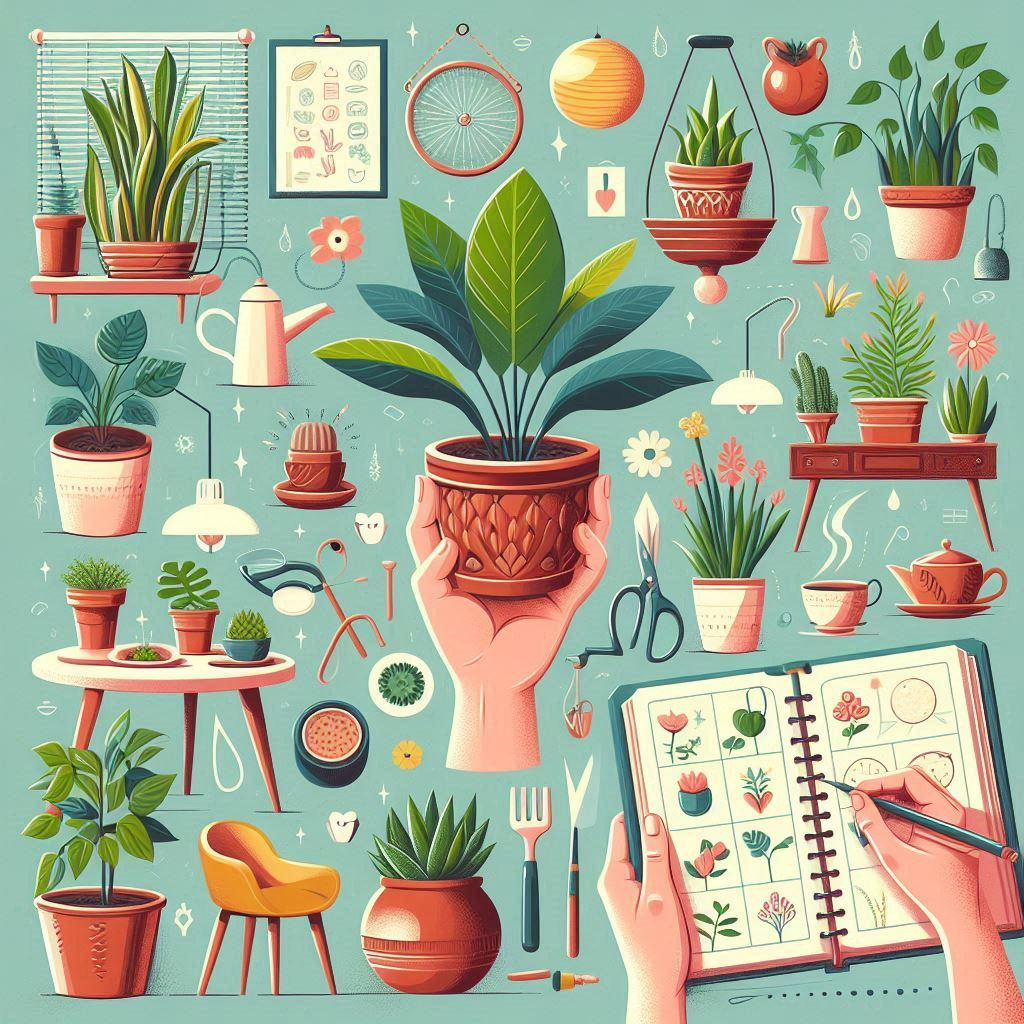How to Take Care of Houseplants: A Comprehensive Guide for Plant Lovers
Houseplants are more than just decorations; they improve air quality, boost your mood, and bring a touch of nature indoors. However, caring for them requires knowledge and commitment. This guide will provide you with practical tips and techniques to help your houseplants thrive.
Why Taking Care of Houseplants Matters
Keywords: benefits of houseplants, importance of plant care
Understanding the significance of plant care can enhance your appreciation for your indoor greenery:
- Improved Air Quality: Houseplants can purify the air by removing toxins and releasing oxygen, making your home healthier.
- Enhanced Mood and Productivity: Being around plants can reduce stress, boost creativity, and improve overall well-being.
- Aesthetic Appeal: Healthy plants can add beauty and vibrancy to your living space, creating a more inviting atmosphere.
Tools You’ll Need
Keywords: plant care tools, gardening supplies
Having the right tools can make caring for your houseplants easier:
- Watering Can: A good watering can helps you provide the right amount of water without over-saturating the soil.
- Soil Moisture Meter: This tool helps you check soil moisture levels, preventing over or under-watering.
- Pruning Shears: Keep your plants healthy by using sharp shears for pruning and trimming dead or damaged leaves.
Step-by-Step Guide to Taking Care of Houseplants
Step 1: Understand Your Plants
Keywords: identifying houseplants, plant care requirements
Each houseplant has specific care requirements, so it’s essential to know what you’re dealing with:
- Research Plant Species: Identify the type of houseplants you have and understand their individual needs regarding light, water, and humidity.
- Know Their Growth Patterns: Some plants may grow quickly while others are slow-growing. Understanding their growth habits will help you plan for repotting and maintenance.
Step 2: Provide the Right Lighting
Keywords: houseplant lighting requirements, light conditions for plants
Light is crucial for plant health:
- Identify Light Levels: Observe how much natural light your plants receive throughout the day. Most houseplants prefer bright, indirect light.
- Use Grow Lights: If natural light is insufficient, consider using LED grow lights to supplement your plants’ lighting needs.
- Rotate Plants: Occasionally rotate your plants to ensure all sides receive equal light exposure, promoting even growth.
Step 3: Water Properly
Keywords: watering techniques, how often to water plants
Watering is one of the most critical aspects of plant care:
- Check Soil Moisture: Use your fingers or a soil moisture meter to check if the top inch of soil is dry before watering.
- Water Deeply: When you water, do so thoroughly until water drains from the bottom of the pot, ensuring the roots absorb moisture effectively.
- Avoid Over-Watering: Over-watering can lead to root rot. Ensure your pots have drainage holes and empty any excess water from saucers.
Step 4: Maintain Humidity Levels
Keywords: humidity for houseplants, increasing humidity
Many houseplants thrive in higher humidity:
- Group Plants Together: Placing plants close together can create a microclimate with increased humidity.
- Use a Humidifier: If your home is dry, consider using a humidifier to maintain humidity levels, especially during winter.
- Misting: Lightly mist your plants with water to provide additional humidity, but avoid overdoing it, as excessive moisture can lead to mold.
Step 5: Fertilize Regularly
Keywords: fertilizing houseplants, when to fertilize plants
Nutrients are vital for healthy growth:
- Choose the Right Fertilizer: Use a balanced liquid fertilizer during the growing season (spring and summer) to provide essential nutrients.
- Follow Instructions: Always follow the manufacturer’s instructions regarding dosage and frequency to avoid over-fertilizing.
- Reduce Fertilization in Dormancy: In fall and winter, many plants enter a dormant phase, so reduce or stop fertilizing during this time.
Step 6: Prune and Repot
Keywords: pruning houseplants, when to repot plants
Regular maintenance ensures your plants stay healthy:
- Prune Dead Leaves: Remove dead or yellowing leaves to promote new growth and prevent disease.
- Repot When Necessary: If your plant outgrows its pot or the soil depletes, repot it into a larger container with fresh soil. This typically occurs every 1-2 years.
- Check for Pests: Regularly inspect your plants for signs of pests and treat them promptly with appropriate methods.
Step 7: Monitor for Pests and Diseases
Keywords: common houseplant pests, plant disease prevention
Keeping an eye on your plants can prevent issues:
- Inspect Regularly: Look for signs of pests like aphids, spider mites, or mealybugs. Early detection is key to managing infestations.
- Use Natural Remedies: Consider using neem oil or insecticidal soap for treating pests. Always test a small area first to ensure your plant responds well.
- Maintain Cleanliness: Keep your plants and their pots clean to prevent disease and pests from taking hold.
Conclusion
Taking care of houseplants is a rewarding hobby that can enhance your living space and improve your well-being. By following these practical tips and understanding your plants’ needs, you can create a thriving indoor garden. Remember that patience and observation are key—your plants will flourish with love and care!
Call to Action
What tips do you have for caring for houseplants? Share your experiences and favorite plant care hacks in the comments below, and let’s help each other grow our indoor gardens!





Be First to Comment